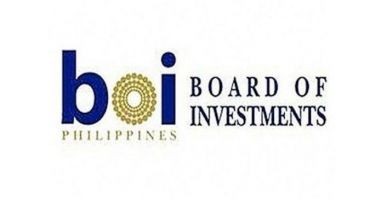Justification for a copyright system
January 9, 2007 | 12:00am
A copyright system is essentially a State-sanctioned monopoly, albeit limited. This monopoly operates by giving a person or entity the legal right to reproduce, create derivative works, distribute and perform/display one’s own work, with the corresponding authority to prevent others from doing the same. Considering its anti-commons idiosyncrasies, how can a copyright system be justified in a society, such as the Philippines, that prides itself as being the free market place of ideas?
Copyright law, like most other laws, began and evolved under different purposes. As times and conditions changed, so has copyright’s justification. For instance, one of the earliest manifestations of a copyright system was in medieval England in 1476. Right after Gutenberg’s printing press was introduced in England, the Crown recognized that this novel piece of equipment gave printers immense power to print and distribute seditious articles inimical to the Crown’s interest. A law was consequently passed requiring all printers to inscribe the names and titles of all their printed works in a government registry. Thus, copyright in its infancy was a tool for censorship to preserve the State.
Eighty years later the utilization of copyright moved from protecting State interest to assisting private enterprise, though not directed at authors and creators but to publishers and printers. In 1557, under the reign of Queen Mary, a charter was granted to the Royal Stationers Company of London, giving the 150-year-old guild of bookbinders, engravers, sellers and printers exclusive right to publish written works. This meant that only members of that guild could make copies of works. Literally, the guild was given a "right to copy."
Justification for our modern day copyright regime can be aptly described under the so-called "access/incentive" dichotomy. To be able to explain this concept to full appreciation one has to picture how intellectual creations were viewed early on, prior to their "propertization." Back then it was practically unheard of that an individual may exclusively posses what his mind had expressed. His ideas are his, so long as he keeps them to himself. But the moment he divulges them, how can he take them back? Or for that matter, how can the people who heard or read his ideas return them to him and erase them from their memory? What’s more, unlike tangible property, taking an idea does not deprive the original owner thereof. It simply proliferates into the minds of others but the original thoughts remain imbedded with the author. To put it more plainly, should an idea be written on a piece of paper, anyone copying from it deprives the author of nothing.
Despite conventional perception that ideas cannot exclusively be possessed, proponents of the "right to the copy" pushed for the giving of some reward to people who have shared their ideas to the world. These proponents understood that the progress of civilization greatly depends on the advancement of science and useful arts and, to achieve this, people have to be encouraged to generate new ideas, or to improve on existing ones, and share them with the world. However, creators would be reluctant to innovate or share their works if the perception is once you divulge your idea it is yours no longer. A system had to be developed wherein creators will be given the incentive to invest effort, time and money for such creative activities.
That is not to say that during this period, creator’s rights were virtually unrecognized. As always, in an era where black letter laws were scant, the tenets of natural justice found relevance. Natural law holds that a person has the moral right to the fruit of one’s labor and should the product be the result of intellectual labor it should still be regarded as the creator’s property as much as the substance on which it is placed upon. In one of the earliest known copyright infringement cases, two future Irish saints of the Catholic Church in the 6th century were embroiled in a conflict as to who had rights to a particular manuscript. St. Columba had copied a book of psalms from the library of a monastery, purportedly to enrich his own monastery’s library. The Abbot of the monastery that owned the original manuscript, St. Finnian, demanded from his visitor the surrender of the copy. St. Columba refused. The King of Ireland settled the matter against St. Columba by enunciating the principle: "To every cow, its calf; to every book, its copy."
However, it was a concern that granting the same protection afforded to conventional property would seemingly give too much control over the intellectual creation at the expense of the public. Because, unlike ordinary physical objects which would eventually depreciate through time and use, intellectual creations can last long after their physical manifestations have turned to dust and trepidation over the granting of equivalent property rights stems from the likelihood that there would always be other Abbots who would likewise deny people access to their collections and such denial could be in perpetuity. Thus, the right to the intellectual creation as property was not primarily espoused.
The development of copyright, therefore, veered away from the premise of property rights and towards the concept of reward and incentive. Under the system eventually worked out, creators are provided with the incentive to create by allowing them "sufficient" time to profit therefrom. At the end of the allotted period, such creations will belong to the public domain so that everyone may have full access to it. In short, the fundamental basis for the enactment of our present copyright regime was not about property rights but the granting of a monopoly that extends only insofar as it serves the public welfare. This accounts for the limited period of copyright protection and the specific enumerations of rights that appear more like licensing clauses rather than the traditional attributes of property ownership. Indeed, back then, copyright was more likely to be referred to as a "monopoly" rather than an "intellectual property."
Success of a copyright system under the "access/incentive" dichotomy requires striking a balance between access to the public and incentives to creators, whereby the public will not be too burden by the monopoly that is intended to promote innovation. A copyright system that correctly balances these two interests is therefore justified in a free market place of ideas inasmuch as it fosters and stimulates the exchange of opinions, skills, imaginings, knowledge and experiences in the community.
[Postscript: Recent events in copyright development have shown that there is a trend towards the justification of a copyright system under the natural right theory: that the fruit of one’s labor is his property. The most notable among them is the ubiquitous use of the phrase "Intellectual Property" which has now become a standard term. Previous to the last quarter of the 20th century, this phrase was rarely used to describe the protection for intellectual creation. Discussion on this recent trend will, however, require another column.]
The author is an Associate of Angara Abello Concepcion Regala & Cruz Law Offices (ACCRALAW) and a faculty member of Far Eastern University Institute of Law. He can be contacted at telephone number 8308000 or e-mail address: [email protected].
Copyright law, like most other laws, began and evolved under different purposes. As times and conditions changed, so has copyright’s justification. For instance, one of the earliest manifestations of a copyright system was in medieval England in 1476. Right after Gutenberg’s printing press was introduced in England, the Crown recognized that this novel piece of equipment gave printers immense power to print and distribute seditious articles inimical to the Crown’s interest. A law was consequently passed requiring all printers to inscribe the names and titles of all their printed works in a government registry. Thus, copyright in its infancy was a tool for censorship to preserve the State.
Eighty years later the utilization of copyright moved from protecting State interest to assisting private enterprise, though not directed at authors and creators but to publishers and printers. In 1557, under the reign of Queen Mary, a charter was granted to the Royal Stationers Company of London, giving the 150-year-old guild of bookbinders, engravers, sellers and printers exclusive right to publish written works. This meant that only members of that guild could make copies of works. Literally, the guild was given a "right to copy."
Justification for our modern day copyright regime can be aptly described under the so-called "access/incentive" dichotomy. To be able to explain this concept to full appreciation one has to picture how intellectual creations were viewed early on, prior to their "propertization." Back then it was practically unheard of that an individual may exclusively posses what his mind had expressed. His ideas are his, so long as he keeps them to himself. But the moment he divulges them, how can he take them back? Or for that matter, how can the people who heard or read his ideas return them to him and erase them from their memory? What’s more, unlike tangible property, taking an idea does not deprive the original owner thereof. It simply proliferates into the minds of others but the original thoughts remain imbedded with the author. To put it more plainly, should an idea be written on a piece of paper, anyone copying from it deprives the author of nothing.
Despite conventional perception that ideas cannot exclusively be possessed, proponents of the "right to the copy" pushed for the giving of some reward to people who have shared their ideas to the world. These proponents understood that the progress of civilization greatly depends on the advancement of science and useful arts and, to achieve this, people have to be encouraged to generate new ideas, or to improve on existing ones, and share them with the world. However, creators would be reluctant to innovate or share their works if the perception is once you divulge your idea it is yours no longer. A system had to be developed wherein creators will be given the incentive to invest effort, time and money for such creative activities.
That is not to say that during this period, creator’s rights were virtually unrecognized. As always, in an era where black letter laws were scant, the tenets of natural justice found relevance. Natural law holds that a person has the moral right to the fruit of one’s labor and should the product be the result of intellectual labor it should still be regarded as the creator’s property as much as the substance on which it is placed upon. In one of the earliest known copyright infringement cases, two future Irish saints of the Catholic Church in the 6th century were embroiled in a conflict as to who had rights to a particular manuscript. St. Columba had copied a book of psalms from the library of a monastery, purportedly to enrich his own monastery’s library. The Abbot of the monastery that owned the original manuscript, St. Finnian, demanded from his visitor the surrender of the copy. St. Columba refused. The King of Ireland settled the matter against St. Columba by enunciating the principle: "To every cow, its calf; to every book, its copy."
However, it was a concern that granting the same protection afforded to conventional property would seemingly give too much control over the intellectual creation at the expense of the public. Because, unlike ordinary physical objects which would eventually depreciate through time and use, intellectual creations can last long after their physical manifestations have turned to dust and trepidation over the granting of equivalent property rights stems from the likelihood that there would always be other Abbots who would likewise deny people access to their collections and such denial could be in perpetuity. Thus, the right to the intellectual creation as property was not primarily espoused.
The development of copyright, therefore, veered away from the premise of property rights and towards the concept of reward and incentive. Under the system eventually worked out, creators are provided with the incentive to create by allowing them "sufficient" time to profit therefrom. At the end of the allotted period, such creations will belong to the public domain so that everyone may have full access to it. In short, the fundamental basis for the enactment of our present copyright regime was not about property rights but the granting of a monopoly that extends only insofar as it serves the public welfare. This accounts for the limited period of copyright protection and the specific enumerations of rights that appear more like licensing clauses rather than the traditional attributes of property ownership. Indeed, back then, copyright was more likely to be referred to as a "monopoly" rather than an "intellectual property."
Success of a copyright system under the "access/incentive" dichotomy requires striking a balance between access to the public and incentives to creators, whereby the public will not be too burden by the monopoly that is intended to promote innovation. A copyright system that correctly balances these two interests is therefore justified in a free market place of ideas inasmuch as it fosters and stimulates the exchange of opinions, skills, imaginings, knowledge and experiences in the community.
[Postscript: Recent events in copyright development have shown that there is a trend towards the justification of a copyright system under the natural right theory: that the fruit of one’s labor is his property. The most notable among them is the ubiquitous use of the phrase "Intellectual Property" which has now become a standard term. Previous to the last quarter of the 20th century, this phrase was rarely used to describe the protection for intellectual creation. Discussion on this recent trend will, however, require another column.]
The author is an Associate of Angara Abello Concepcion Regala & Cruz Law Offices (ACCRALAW) and a faculty member of Far Eastern University Institute of Law. He can be contacted at telephone number 8308000 or e-mail address: [email protected].
BrandSpace Articles
<
>
- Latest
- Trending
Trending
Latest
Trending
Latest
Recommended





























